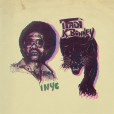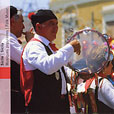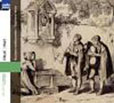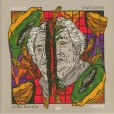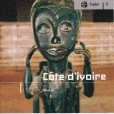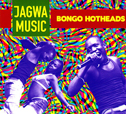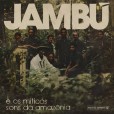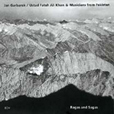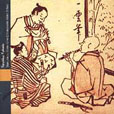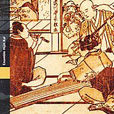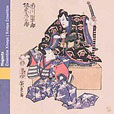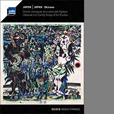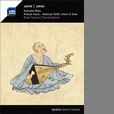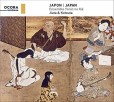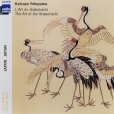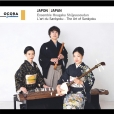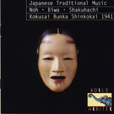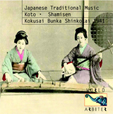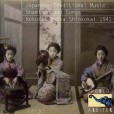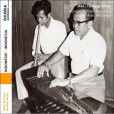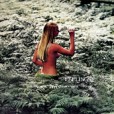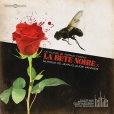Your basket is empty

Work songs, music and songs about everyday life, or the calendar, or perhaps to run alongside ritual feasts, with guitar, mandolin, accordion, guimbarde, tambourine, bagpipe and reed flute.
1950s recordings, mostly vocal, with wide range and variety — Alpine choral polyphony, poetic improvisation from Central Italy, funeral laments from the South, Sicilian songs to cure tarantula bites…
The genre-slaying, polyharmonic, polyrhythmic ‘universal music’ of Hermeto Pascoal and his bassist Itibere Zwarg, performed in 2001 by a workshop comprising twenty-nine of Rio de Janeiro’s most exceptional young musicians.
An overlooked masterpiece amongst recent Brazilian recordings: invigorating and marvellous; warmly recommended.
Casio and percussion nut-outs from Dar Es Salaam, Tanzania. Songs about the concrete jungle, infidelity and voodoo, Mchiriku-style.
‘The city of Belém, in the Northern state of Para in Brazil, has long been a hotbed of culture and musical innovation. Enveloped by the mystical wonder of the Amazonian forest and overlooking the vastness of the Atlantic Ocean, its Amerindians, Europeans and Africans pioneered musical genres such as Carimbó, Samba-De-Cacete, Siriá, Bois-Bumbás and bambiá.
‘There was a radio station, a recording studio, a music label and a deep, cross-genre roster of artists. Beginning as simple gramophones connected to loudspeakers tied to lamp posts or trees, the aparelhagem sonora of Belém evolved into sophisticated setups, drawing thousands of revelers.
‘The music and tales found in Jambu are stories of resilience, triumph against all odds, and, most importantly, of a city at the edge of the Amazon which has always known how to throw a damn good party.’
‘The area’s best club music from the mid-‘70s, an exuberant, carnival-esque mishmash of local carimbó and siriá styles with big-band brass and frenetic Afro-Latino percussion. Best of all there are the three hip-swivelling cuts by Pinduca, founding father of lambada and king of Carimbó’ (Q).
With Ustad Fateh Ali Khan singing; Ustad Shaukat Hussain, tabla; Ustad Nazim Ali Khan, sarangi; Deepika Thathaal, voice; Manu Katche, drums.
Six deeply spiritual pieces from the Kinko School, developed in eighteenth century Japan by wandering zen monks for whom this flute music was a pathway to enlightenment.
Subtle, calm classical trio music — for shakuhachi flute, koto zither and shamisen lute — influenced by Buddhism.
Musical accompaniments to kabuki theatre, by this pre-eminent Japanese chamber orchestra, with voice, shamisen lutes, fue flute, and kotsuzumi, otsuzumi and taiko drums.
With accompaniment on the sanshin lute — a lovely, melodic blend of Japanese, Chinese and South East Asian styles characteristic of the Okinawa archipelago (formerly the independent kingdom of Ryukyu).
The medieval story of the Heike clan — combining drama and heroics with Buddhist reflection on the ephemerality of existence — sung by Kakujo Iwasa and Kakuryu Saito, with lute accompaniment.
Exquisite music for shamisen lute, koto zither, and shakuhachi flute, running back more than a hundred years, to the end of the Edo era. Expertly performed by this accomplished trio of graduates of the Tokyo National Conservatory.
A magical, poignant selection from sixty 78s issued in 1942. Featuring Noh theatre musicians, many trained by artists active before the Meiji period, prior to 1868.
Imai Keisho playing koto and Yamase Shoin shamisen, amongst others. Historic recordings by Kokusai Bunka Shinkokai. Excellent label.
Sublimely refined songs about broken hearts, dazzling landscapes and lost kingdoms, with zither and flute accompaniment.
The legendary Library album by Sandro Brugnolini and Stefano Torossi, undercover in 1975 for contractual reasons.
Bad-ass headz vibes — madly sampledelic, super-funky, jazzy and widescreen — with the genies of Herbie, Barry White, Isaac Hayes and the Mizells, all in the mix.
Two fabled, previously unreleased soundtracks — hallucinogenic orchestral music for Patrick Chaput, and a waltzing, rhythmic onslaught for Robert Benayoun — complete with an extensive booklet of essays, interviews, secrets and rare images from both films.
